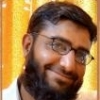-
Posts
518 -
Joined
-
Last visited
-
Days Won
279
Badar (BAZ) last won the day on May 22 2024
Badar (BAZ) had the most liked content!
About Badar (BAZ)

Profile Information
-
Gender
Male
-
Location
CHCH
-
University
NUST, Politecnico Di torino
-
Employer
Eg
-
Interests
Structural engineering,cricket,football,economics and films/music.
Recent Profile Visitors
17017 profile views
Badar (BAZ)'s Achievements
-
Strength design lateral loads
-
 Haseeb Ur Rehman Raja reacted to a post in a topic:
Stiffness Modifiers
Haseeb Ur Rehman Raja reacted to a post in a topic:
Stiffness Modifiers
-
Atif Ali started following Badar (BAZ)
-
Haseeb Ur Rehman Raja started following Badar (BAZ)
-
 UmarMakhzumi reacted to a post in a topic:
long-period transition period in Etabs
UmarMakhzumi reacted to a post in a topic:
long-period transition period in Etabs
-
Leave it to the default value (8 seconds). For your structure, any number more than 2 seconds will not change the design force. So this parameter is useless for your purposes.
-
 ganesh reacted to a post in a topic:
long-period transition period in Etabs
ganesh reacted to a post in a topic:
long-period transition period in Etabs
-
BCP has not given this value. You can put reasonable number based on your engineering judgment. Majority of buildings do not fall in that part of response spectrum, so it does not matter ( Unless you are working on building more than 50 storey, or building with base isolation).
-

Problems about stiffness modification for slab with beam foundation
Badar (BAZ) replied to Asenn's topic in Foundation Design
Hi; You can use the values listed for MCE(R) for your linear static/dynamic analysis based on a DBE earthquake. -
 Ayesha reacted to a post in a topic:
"The PMM interaction surface is not convex" - SAP2000
Ayesha reacted to a post in a topic:
"The PMM interaction surface is not convex" - SAP2000
-
 Suarez reacted to a post in a topic:
"The PMM interaction surface is not convex" - SAP2000
Suarez reacted to a post in a topic:
"The PMM interaction surface is not convex" - SAP2000
-

"The PMM interaction surface is not convex" - SAP2000
Badar (BAZ) replied to Suarez's topic in Seismic Design
This is most likely not a serious error; it will not have drastic effect on the behavior of the member. You might want to take a look at the hinge properties. -
 Nawaz Qasim reacted to a post in a topic:
FAILURE MESSAGE ETABS - Warning #52 Delta exceeds 1.4 (ACI 318-14 6.2.6, 6.6.4.5.1).
Nawaz Qasim reacted to a post in a topic:
FAILURE MESSAGE ETABS - Warning #52 Delta exceeds 1.4 (ACI 318-14 6.2.6, 6.6.4.5.1).
-
 Tstruct reacted to a post in a topic:
PMM Ratio of Top Column is Higher than Bottom Column
Tstruct reacted to a post in a topic:
PMM Ratio of Top Column is Higher than Bottom Column
-
 Badar (BAZ) reacted to a post in a topic:
High strength Concrete
Badar (BAZ) reacted to a post in a topic:
High strength Concrete
-
I am not in a position to comment on the part related to properties of concrete. There can be number of reasons for it. Shrinkage is most obvious one. Do they have reasonable spacing of temp and shrinkage rebars, if any? Are cracks wide enough to lead to yielding in rebars? Have you established the structural adequacy to eliminate the possibility of structural cracks?
-
 M.Hasnain reacted to a post in a topic:
What foundation is most suitable for a house close to the sea?
M.Hasnain reacted to a post in a topic:
What foundation is most suitable for a house close to the sea?
-
The concept: Member deforms when it receives nodal forces which can be axial, moment, torsion, and shear acting either individually or in combination with other types. In its deformed shape, the gravity force tends to deform the structural member further, thus leading to an increase in end moments. These are called second order effects. These effects are significant for slender members only. In addition, code requires you to check the drifts in your structure with an analysis that incorporates this P-delta effect so as not to underestimate . If P-delta analysis does not converge: Check model for connectivity issues Check model for cantilever elements not connected to slab or any other bracing member check meshing P-delta analysis also fails to converge is you have membrane assignment to your area elements if all of above is ok, make it stiffer.
-
 Ayesha reacted to a post in a topic:
What foundation is most suitable for a house close to the sea?
Ayesha reacted to a post in a topic:
What foundation is most suitable for a house close to the sea?
-
 Ayesha reacted to a post in a topic:
ETABS:Two adjacent floors acting as a single span when secondary beams are pinned to primary beams
Ayesha reacted to a post in a topic:
ETABS:Two adjacent floors acting as a single span when secondary beams are pinned to primary beams
-
Can you show entire floor along with location of area where you are checking deflections. From your results of with/without slab and the partial snapshot, it appears as if it has one-way distribution. Your secondary beam might be framed in a way that is leading to an increase in deflection rather that other way around.
- 6 replies
-
- etabs
- secondary beams
-
(and 1 more)
Tagged with:
-
Have you compared the deflection with and without the secondary beam?
- 6 replies
-
- etabs
- secondary beams
-
(and 1 more)
Tagged with:
-
I think your reading of the results given by ETABS is not reasonable. Also floors is incorrect terminology to be used here, I reckon you mean two slab panels. If two slab panels are connected by a pin-end secondary beam supported on fixed-end beams, you will get more deflections in that panel as compared to the model in which secondary beam can transfer end moments to primary beams.
- 6 replies
-
- etabs
- secondary beams
-
(and 1 more)
Tagged with:
-

What foundation is most suitable for a house close to the sea?
Badar (BAZ) replied to symakhan's topic in Concrete Design
Please leave it to some one who understands it better. After reading your post, I think, you are not the right person ( from practical building construction point of view) to get the advice. -

Structural Assessment of Not-so-old Existing Buildings
Badar (BAZ) replied to SAL9000's topic in Seismic Design
The codes that deal with existing structures have detailed guidelines regarding collection of data regarding in-situ material properties and geometry of structure. Consequently, the code allows to use higher strength reduction factors if your confidence in the existing material properties is high. In addition, they provide guidelines regarding nonlinear modelling as well. Based on these, you should decide which code to follow. In my opinion, for a relatively new building, you can use ACI 318's/ASCE 7's latest guidelines to check its adequacy. If if fails that test, then ASCE 41's latest guidelines may result in better assessment of structure. -
Mehmood Ul Hassan started following Badar (BAZ)
-

PMM Ratio of Top Column is Higher than Bottom Column
Badar (BAZ) replied to Jibran's topic in Concrete Design
Study the PMM diagram. For column at top floor, small axial load coupled with relatively large moment is causing your PMM ratio to shoot up. -

Help needed with Disaster Resilient Masonry House Structure
Badar (BAZ) replied to Omer Ahmed's topic in General Discussion
"There is no favorable wind for sailor who does not know where to go". You are asking wrong questions. Whatever I write, will misguide you. -

Help needed with Disaster Resilient Masonry House Structure
Badar (BAZ) replied to Omer Ahmed's topic in General Discussion
Use ACI 530-11 for the reference. You do not need a software for these structures, unless you want to know the design shear on individual wall panels. For most masonry buildings (rectangular shape with no vertical irregularities, normal size rooms, and only the normal size window and door openings) you do not even need to consult any code or use software. You should be able to design these kind of structures in 30 minutes.








